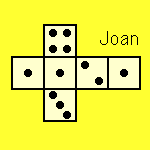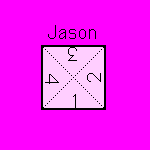Manipulative
| |
Materials: event cards, overhead spinner, spinner mat (1-4), regular six-sided die, 4 beans, paper cup,
coin, paper bag (containing 5 blue, 3 red and 2 yellow tiles), deck of cards (A to 10 in one suit).
- Draw 3 event cards.
- Conduct an experiment for each card. Save the data.
- Compare your theoretical probability with your experimental probability.
- Sort the cards from those where the theoretical probability and experimental probability were most similiar, to those where they were the most different.
Questions:
- Is it common for the experimental probability and theoretical probability to be exactly the same? Why?
- List some reasons which might explain the differences between theoretical probabilities and the experimental probabilities you obtained.
|
|


